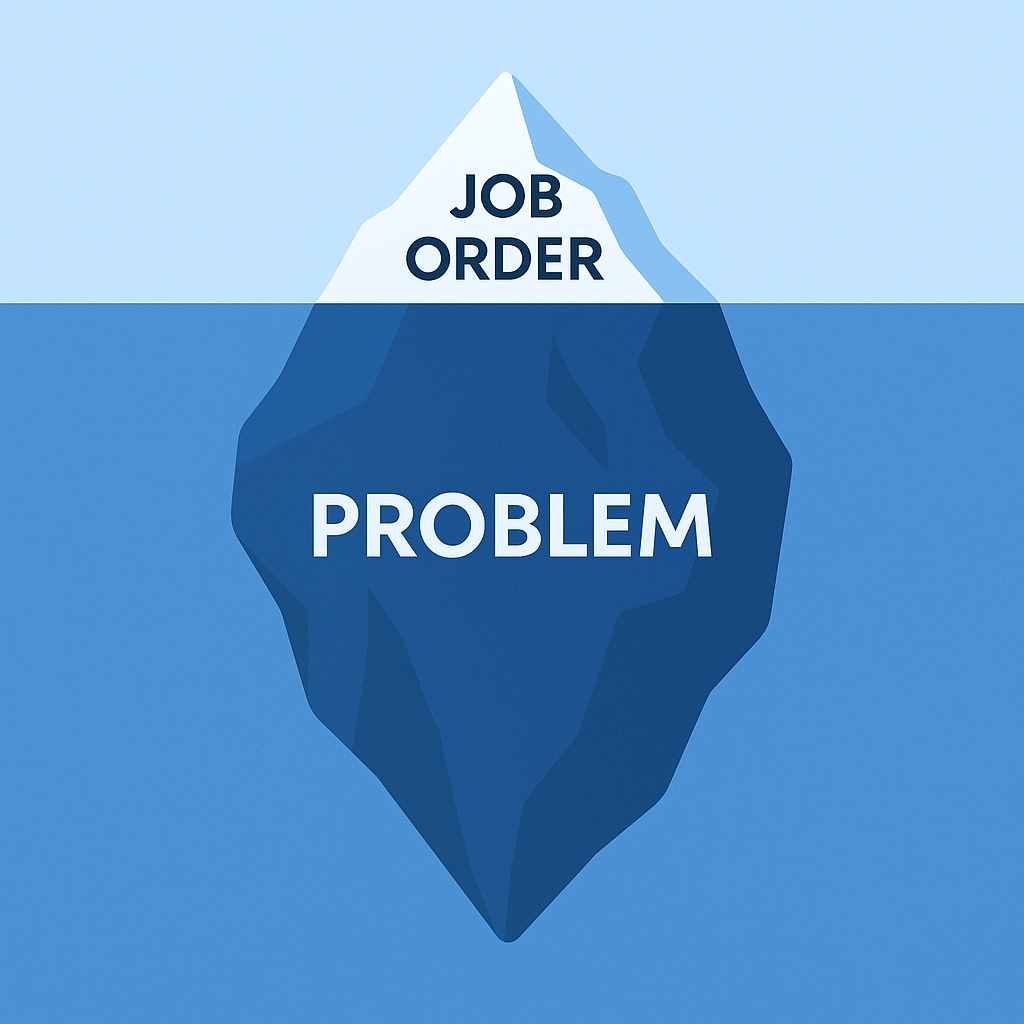Selling With Your Consultant
In my previous post, How to Prevent Unexpected Contract Terminations, I shared how systemizing consultant and client check-ins at key milestones...
5 min read
![]() Dan Fisher
:
Jul 25, 2016 8:00:00 AM
Dan Fisher
:
Jul 25, 2016 8:00:00 AM

If you're not learning you're not growing
and if you're not growing you're dying
-John Maxwell
I read that quote years ago reading one of his books and it has stayed with me ever since. Here is a funny story to illustrate the point and tie in with this blog topic, how to  encourage and sustain a culture of continuous learning.
encourage and sustain a culture of continuous learning.
Six months into my new venture of providing sales training for IT staffing firms I get a call from a prospective client. The owner asks me to come out to provide a sales training workshop for their team of ten sales reps and a couple of sales managers. I was really excited because this was going to be my first first instructor led sales training workshop.
Here came the kicker. A couple of days before the workshop the owner calls me, after we had already set the agenda and objectives weeks prior, and says "Dan, I just want to make sure you know to bring "the advanced stuff," because you know, we really have a team of senior, very seasoned sales professionals." I said "what do you mean the advanced stuff?" He went on to explain that he wanted my most advanced sales training material because that is what he felt his sales team needed because he had a group of "senior" reps.
After the call I was a nervous wreck. I was thinking to myself, "do I have advanced material? "Is my material going to be good enough and strong enough?" The day of the workshop rolls around and I stand up in front of the room full of salespeople. Why buy the way, was more like 20 salespeople and NOT 10! The owners and sales managers were in the room as well. The workshop began with a focus on cold calling calling so I started talking about the importance of disarming on cold calls and immediately the questions start rolling in from the the audience
After I started hearing these questions my heartbeat went down and my confidence level went back up. Way up! Why? More on that in a second, but I knew I needed to make my point and make it in a big way in order to take back control of the workshop and let this sales team know that they clearly had a lot to learn. So what did I do?
I said before we go any further, why don't you show me how you do it so I can understand where you are coming from. Next, I put their most senior rep (and ironically the guy asking many of the questions and sitting in the front row) on the spot by asking him to role play with me in front of the entire room. I agreed to play the role of the sales rep while he played the role of the client to demonstrate my approach in exchange for him playing the role of the sales rep and I the client to demonstrate his approach. As a group we agreed that the room full of observers would judge each role play on it's authenticity and which one would produce the greater outcome on a real cold call with a real client.
So what exactly happened and why did my confidence level surge? These so called "seasoned and senior level reps" who needed the "advanced training" were asking questions you would expect from a first or second year sales rep with little or no sales training, or experience or, someone who sold copies in 1984 and hadn't learned anything new since then.
The moral of the story is, despite the sales team averaging just over 10 years of industry sales experience, their skill level was equivalent to a first year sales intern who lacked the necessary sales skills to be successful. In short, they had stunted growth because they were applying sales strategies from the 1990's. They failed to encourage and sustain a culture of continuous learning.
Below are seven tips for encouraging and sustaining a culture of continuous learning, all of which are made possible with a culture built on developmental coaching
Everyday Competition
Sales is competitive. The staffing industry is competitive. Life in general and the world we live in is competitive. A study conducted by Salesforce.com revealed that sales teams that use gamification improve sales performance by 11-50%. Another study conducted by Aberdeen Group showed that 31% more first year reps achieved quota when supported with game mechanics. The takeaway is, make your sales culture as competitive an environment as possible and put your reps and recruiters in a position where they must compete every day. How? Create competitions. Make everything a competition, every day. The best submittal note. The number of outbound calls. The number of inbound emails received from new prospects. The best candidate presentation. The best cold call. The best email or voice mail message. Make everything a competition. This is easy and fun!! Make your people compete. Nobody wants to be the "weak link" of the team.
30 Day Challenge
Sales onboarding and training shouldn't stop after the new hire has completed the training material or courses. Set up 30 day challenges (consistently every month). The competition scenario can be different every time. You can have role play competitions where the peers or the managers are the judges. The point is, make your people uncomfortable by putting them on the spot and make them compete through role play scenarios and other exercises. Hosting a 30 day challenge every thirty days will keep everyone on their toes.
Establish Certification Exams
Establish clear goals and expectations with your new hires for how you expect your sales reps (and recruiters) to execute each step of your sales methodology. This will ensure and reinforce the fact that you've established standards for success. Once you do that create the exams (hand written and oral). Require all employees to demonstrate a certain level proficiency with executing each step of your methodology. Be sure to continuously update the exams so that they don't get stagnate and outdated.
Make Training Assets Available Through LMS or Portal
Make all of your training assets including playbooks, scripts, job aids, case studies and videos available for all employees to access through an LMS (learning management system) or online portal (by the way, you can upload your content to our LMS if you don't have one:)! Be sure track who (which employees) read and watch which content and how often.
Encourage Risk with A/B Testing
To encourage risk and to get reps and recruiters outside of their comfort zone to try new strategies and approaches you can use A/B testing. For example, if your sales team is struggling to get replies from the emails they send to prospects perhaps they should start mixing up their message. Create different email templates and label them. Next track how many of each email type you send out and which ones get the most responses. This will encourage people to try new ideas through experimentation plus it is fun and everyone learns. So stop doing the same thing over and over (isn't that the definition of insanity).
Create a Training Reinforcement Plan
Most companies significantly over-emphasize the "launch" of the training initiative and significantly under-emphasize the sustain phase including a new hire's learning curve to becoming "conversation ready."
A sales training reinforcement or user adoption plan highlights the specific tasks and events that occur after the implementation and training to reinforce and drive the new desired behaviors. The plan details the content, the cadence or frequency and the event leader. This reinforcement schedule must involve the entire organization and it should include a variety of activities.
The reinforcement plan engages team members through an assortment of communication vehicles to put a sustained focus on the reinforcement of desired change in behavior. Depending on the complexity of the change, the tasks and activities contained in the reinforcement plan should last for several weeks to several months to ensure the change permeates the entire organization.
Coach the Coaches
Last but not least (actually this is the most important part) you must coach the coaches. What this means is ownership or senior leadership must hold middle managers accountable to consistently modeling the desired behaviors on the sales floor every day. They also must coach the middle managers on how to coach and develop talent and reinforce the sales methodology and the sales process to ensure adoption. Perhaps you have heard the old management adage, "people do what people see." We hear many managers telling their reps "you need to make more phone calls and you need to get more meetings and you need to get more job orders." But we see very few managers demonstrating (through role play or on actual live customer calls) how to actually execute these behaviors and achieve the desired outcomes.
So what are you doing to encourage and sustain a culture of continuous learning? Download our ebook and learn how to create a culture of coaching.

In my previous post, How to Prevent Unexpected Contract Terminations, I shared how systemizing consultant and client check-ins at key milestones...

About a year ago, I was serving as the fractional revenue leader, managing sales and recruiting for a client.

If you’ve worked in staffing long enough, you’ve been trained to chase job orders.